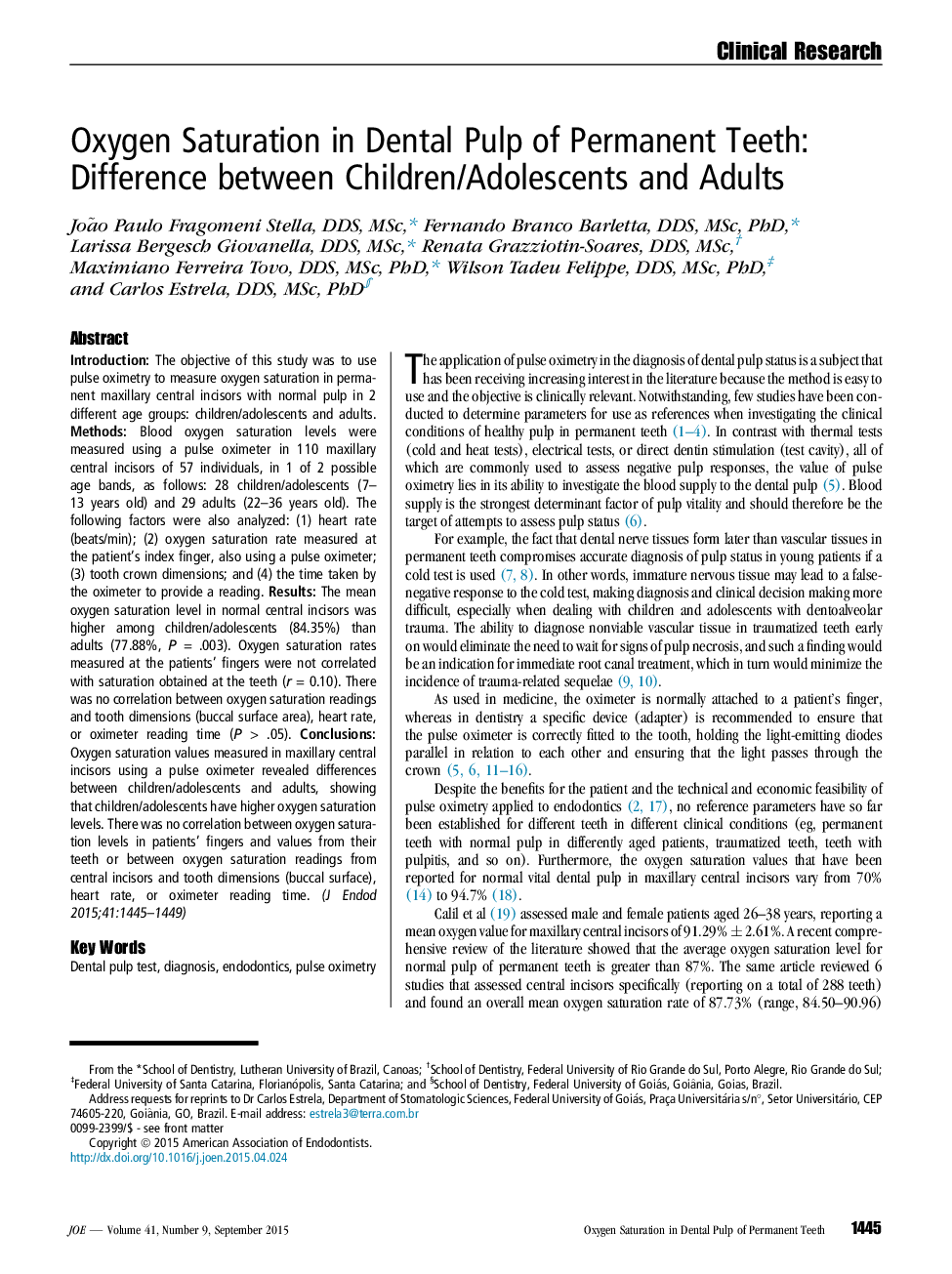| Article ID | Journal | Published Year | Pages | File Type |
|---|---|---|---|---|
| 3146590 | Journal of Endodontics | 2015 | 5 Pages |
IntroductionThe objective of this study was to use pulse oximetry to measure oxygen saturation in permanent maxillary central incisors with normal pulp in 2 different age groups: children/adolescents and adults.MethodsBlood oxygen saturation levels were measured using a pulse oximeter in 110 maxillary central incisors of 57 individuals, in 1 of 2 possible age bands, as follows: 28 children/adolescents (7–13 years old) and 29 adults (22–36 years old). The following factors were also analyzed: (1) heart rate (beats/min); (2) oxygen saturation rate measured at the patient's index finger, also using a pulse oximeter; (3) tooth crown dimensions; and (4) the time taken by the oximeter to provide a reading.ResultsThe mean oxygen saturation level in normal central incisors was higher among children/adolescents (84.35%) than adults (77.88%, P = .003). Oxygen saturation rates measured at the patients' fingers were not correlated with saturation obtained at the teeth (r = 0.10). There was no correlation between oxygen saturation readings and tooth dimensions (buccal surface area), heart rate, or oximeter reading time (P > .05).ConclusionsOxygen saturation values measured in maxillary central incisors using a pulse oximeter revealed differences between children/adolescents and adults, showing that children/adolescents have higher oxygen saturation levels. There was no correlation between oxygen saturation levels in patients' fingers and values from their teeth or between oxygen saturation readings from central incisors and tooth dimensions (buccal surface), heart rate, or oximeter reading time.
